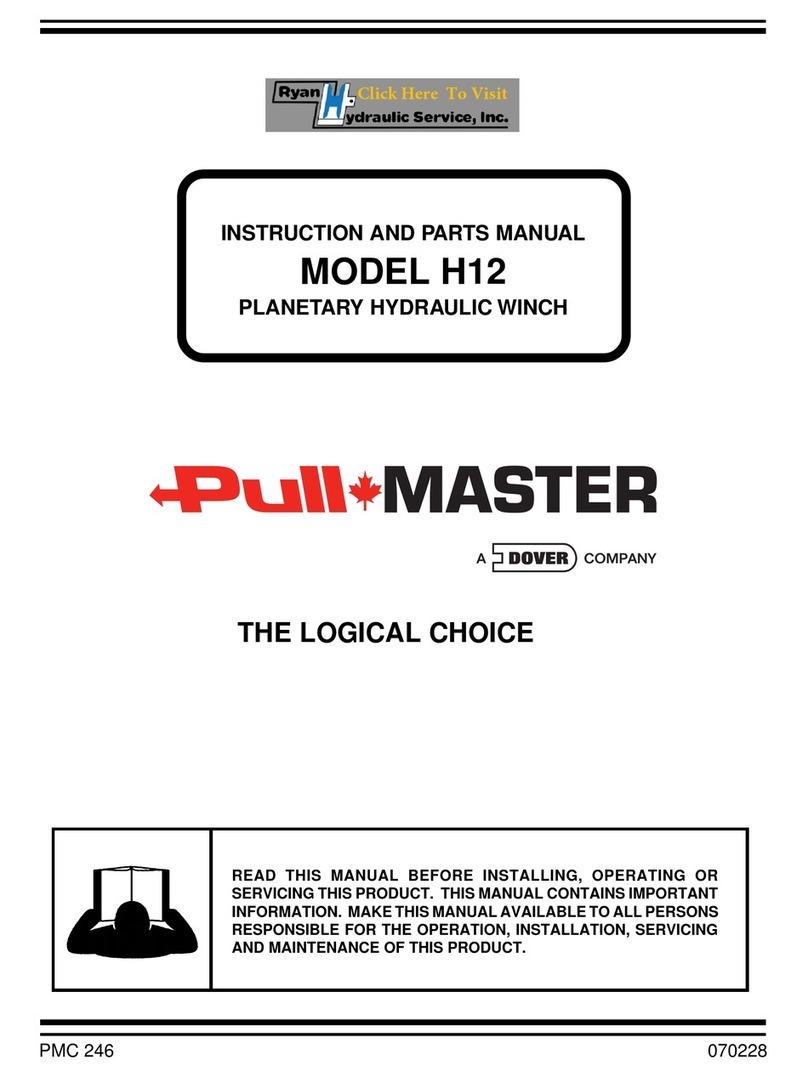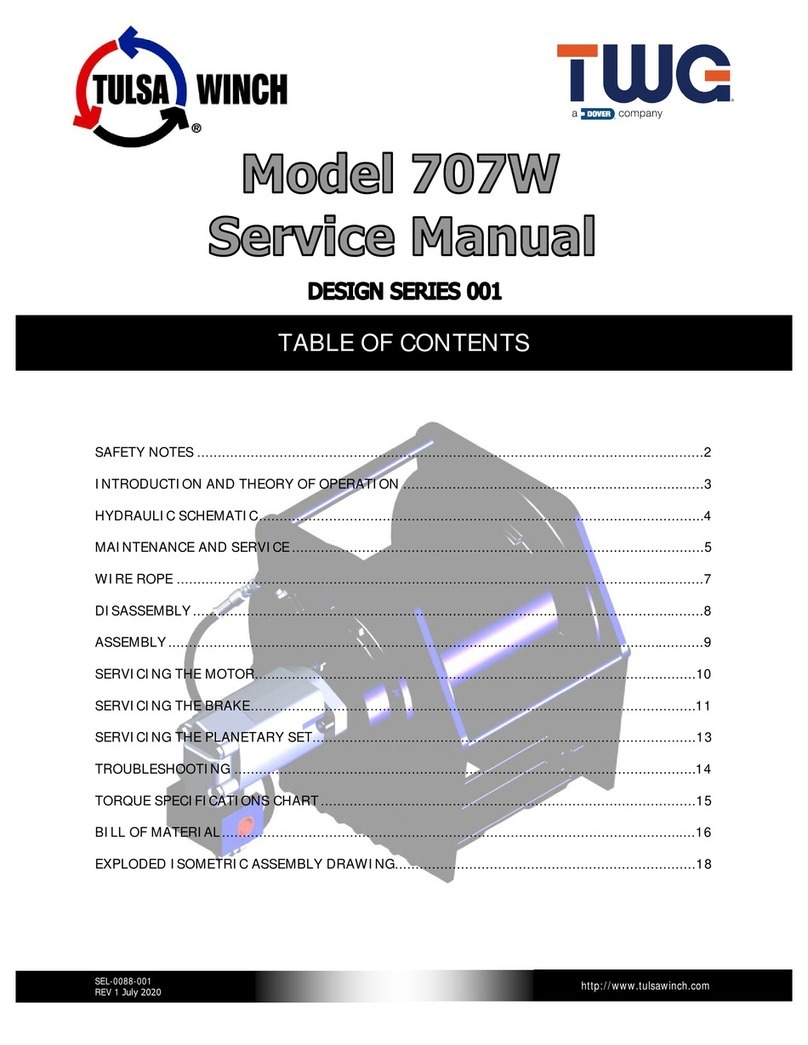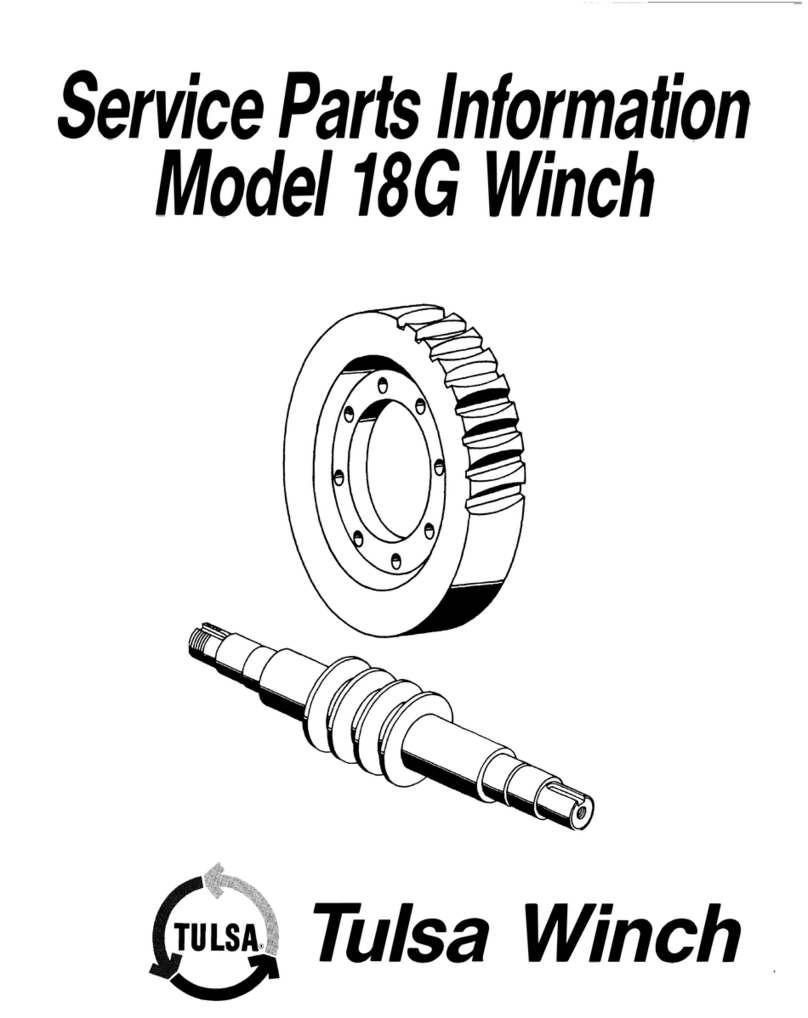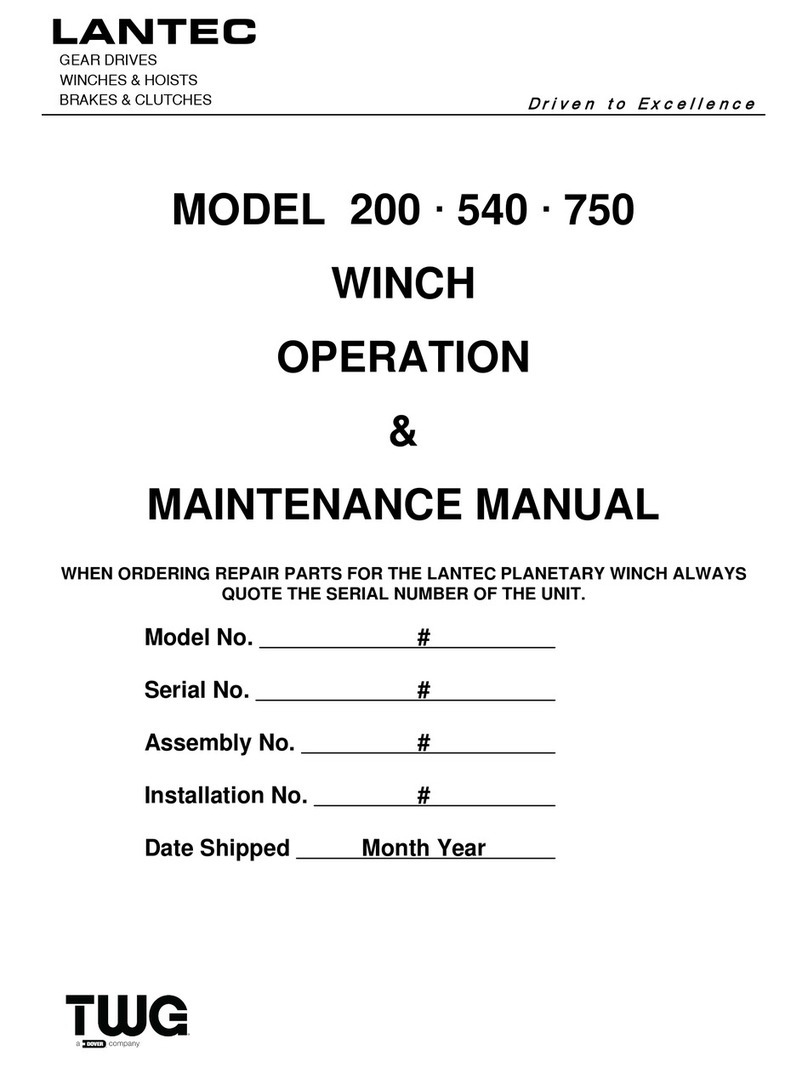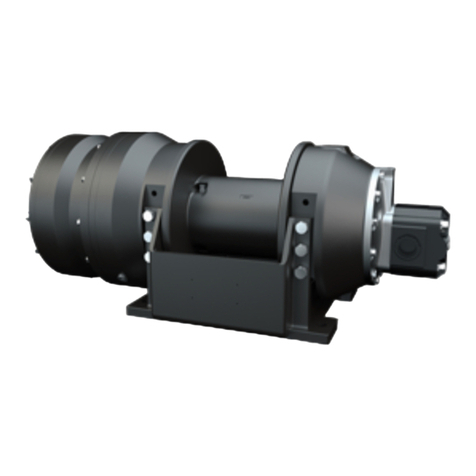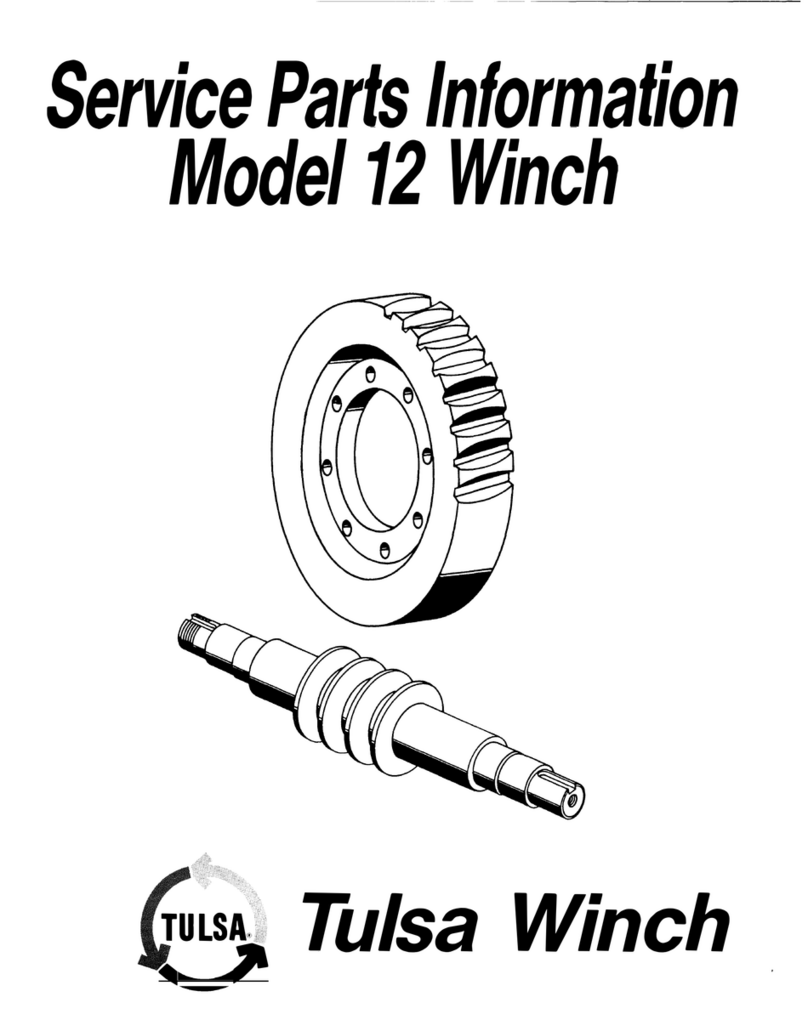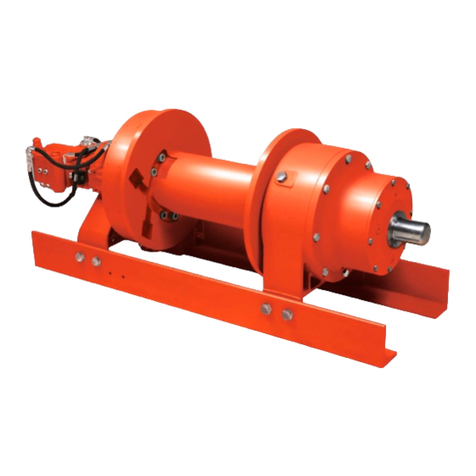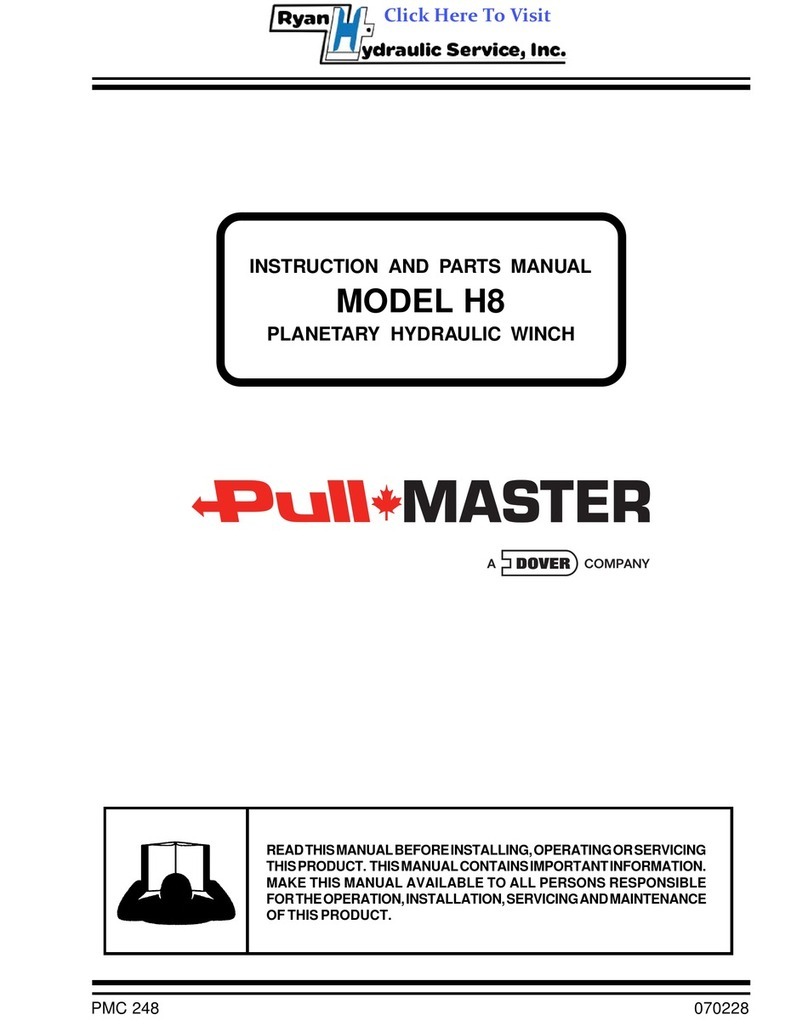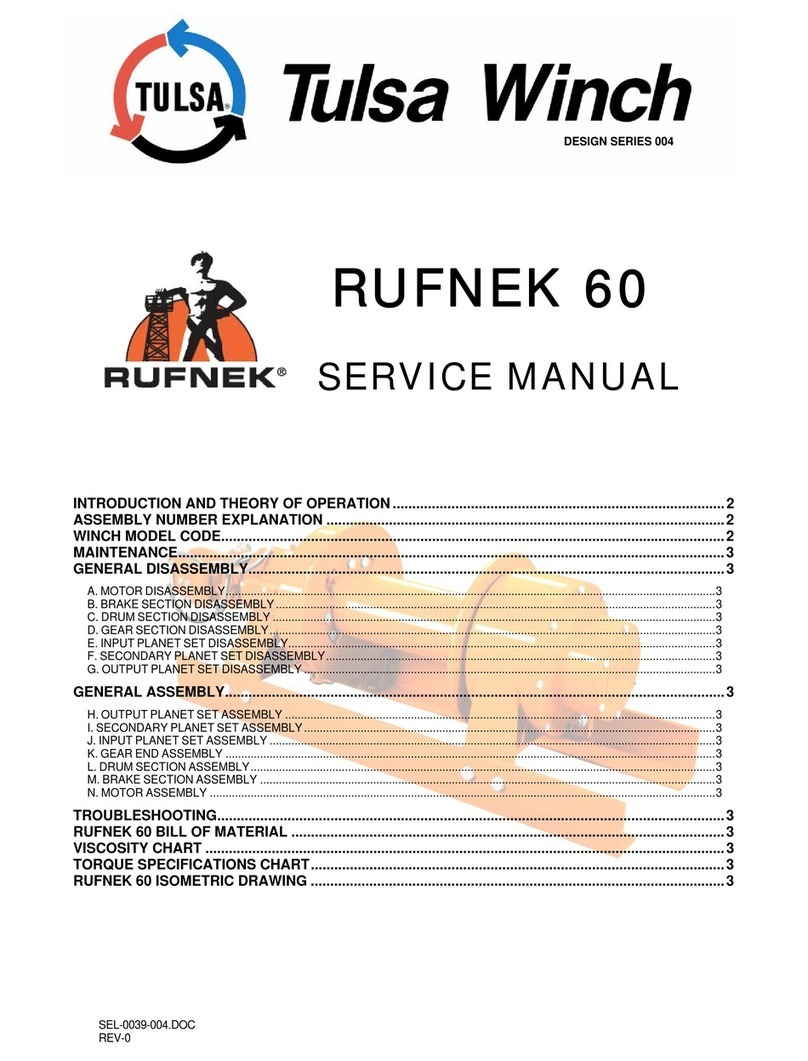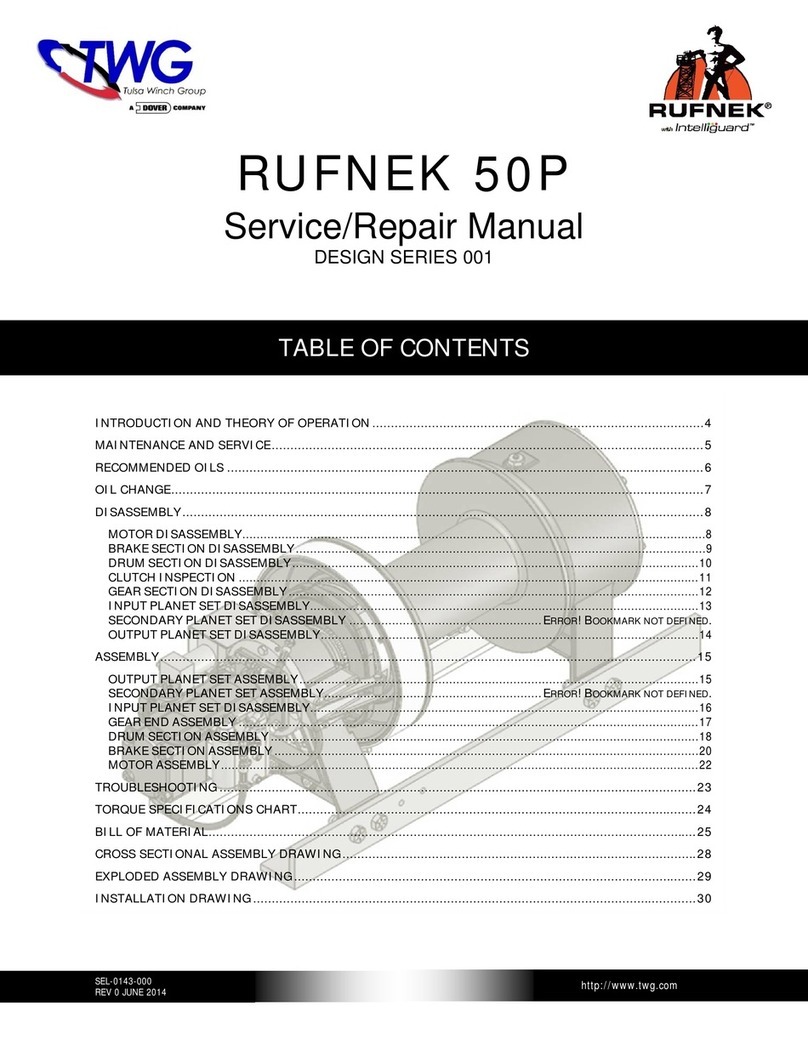
9
16 110 106 108 99
40 41 48
17
12
13
92
47
46
19
103
97
51
15 108
99
96 89
80
91 86 108
90 85 107
76
11
43
44
21
20
45 77
73 71
72
74
70
19 41
40 39
93
10
3
14
If a complete tear down is not
necessar
, make sure the
input shaft (21
does not
move during removal of the
drum. If the shaft is allowed
to move, the input spacer
(104
will fall into the
ear set
ultimatel
causin
failure to
the
ear section of the winch.
The gear cover (3
will have to
be removed to re-position the
spacer on the input shaft.
C. DRUM SECTION DISASSEMBLY
1. To remove the drum, first disconnect the
cable from the U-bolt (43) and lay aside. If
removing the drum from the motor end with
the motor and brake disassembled, first
remove the cotter keys (108) and clevis pins
(99) connecting the yoke (17) to the bracket
(110) & air cylinder (15).
You may need to remove the
air lines, so it’s a good idea to
mark them for re-assembly.
2. Support the weight of the drum with a hoist.
Remove the four cap screws (70) and the
nuts and washers (71, 72) on the bottom of
the brake housing (16). Disconnect the
airline running from the air cylinder (15) to
the brake housing (16). Remove the brake
housing by sliding it off of the output shaft
(20). At this time you will need to remove
two cap screws (70), nuts and washers (71,
72) from the frames (73 or 74). Do not
remove air cylinder (76) yet. Disconnect the
air line from the backside of the brake
housing (16) that goes to the brake band air
cylinder. You can now remove the brake
band assembly (77). Note which frame the
mounting bolts are on for re-assembly.
Inspect and replace, if needed.
3. Remove the outer thrust collar (48) by
loosening three set screws (89).
4. Remove the yoke (17), sliding clutch (13),
and coupler (12). Remove the three keys
(47) and the inner thrust collar (46).
Remove the drum using a hoist. Inspect the
bushings (9) in both ends of the drum.
You should also inspect the bushing
and seal (40, 41) that are located
in the end of the brake housing.
5. If necessary, replace the drum clutch (14) at
this time by removing six capscrews (45). If
you replace the clutch, make sure to torque
the capscrews to the specified torque upon
re-assembly. (See torque specifications
chart on page 28 of this manual.)
